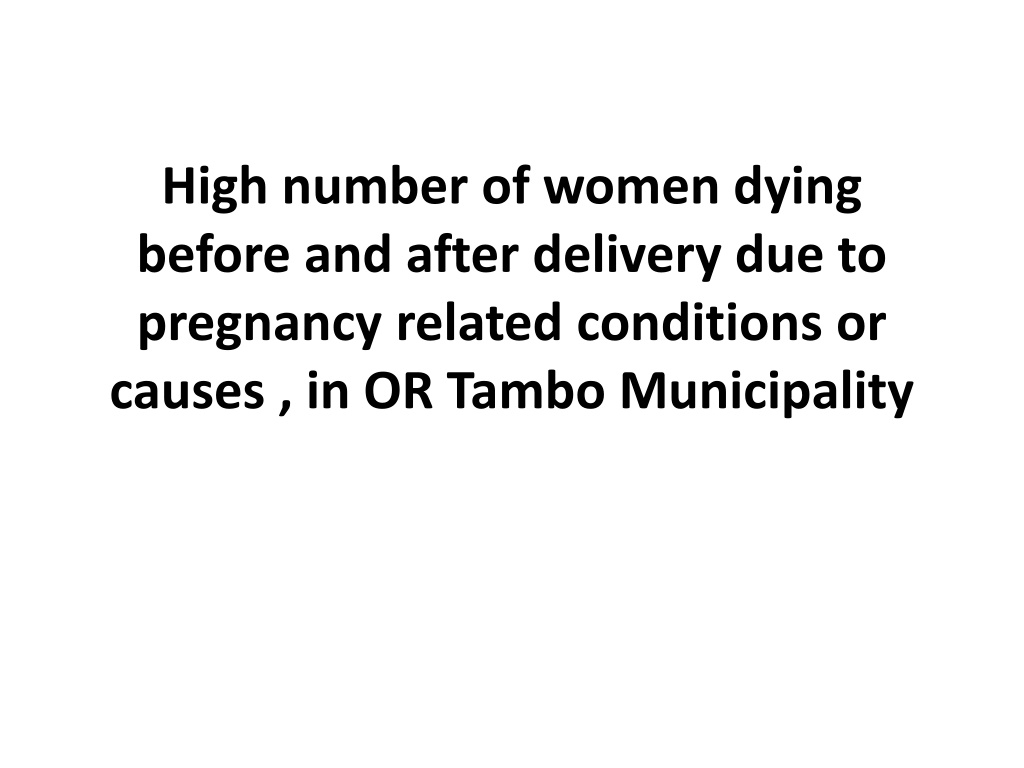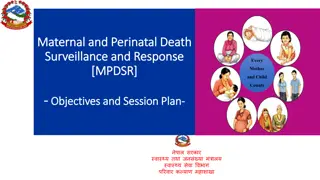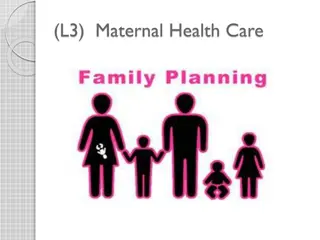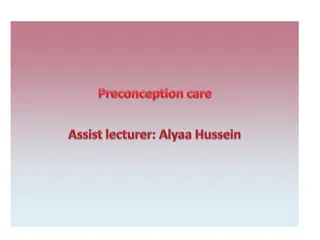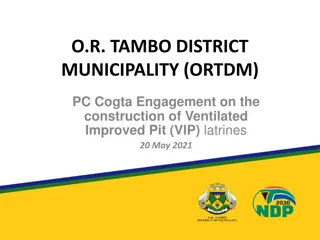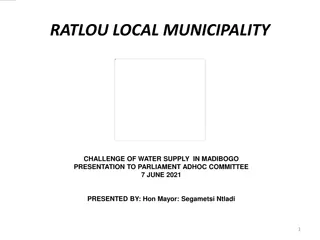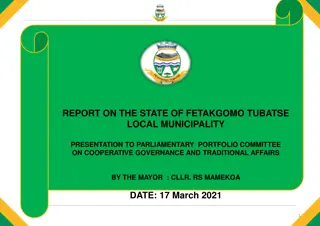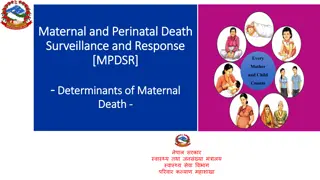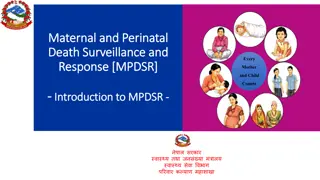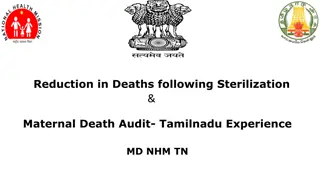Addressing Maternal Health Challenges in OR Tambo Municipality
High maternal mortality rates in OR Tambo Municipality are attributed to various medical, socio-economic, and cultural factors. Despite good policies primarily focusing on biomedical issues, implementation gaps exist. Recommendations include improving primary healthcare delivery in rural areas through inter-sectoral collaboration with key stakeholders to ensure better accessibility. Addressing issues such as failure to attend antenatal clinics, challenges in reaching health facilities on time, and cultural beliefs is crucial to reduce maternal deaths.
Download Presentation

Please find below an Image/Link to download the presentation.
The content on the website is provided AS IS for your information and personal use only. It may not be sold, licensed, or shared on other websites without obtaining consent from the author. Download presentation by click this link. If you encounter any issues during the download, it is possible that the publisher has removed the file from their server.
E N D
Presentation Transcript
High number of women dying before and after delivery due to pregnancy related conditions or causes , in OR Tambo Municipality
Problem We as O R Tambo municipality failed to reach millennium developmental goal number 5(Improved health for pregnant women )
Issues of concern Medical causes: HIV/AIDS Pregnancy Induced Hypertension Bleeding During pregnancy, labour And After Delivery Multiple Pregnancies Socio-economic causes Behaviour Access to health services Transport Finance Health systems Cultural causes: Beliefs Practices
Policy We have good policies that address primarily the biomedical issues to be dealt with at health facilities, however they fail to adequately address socio-economic and cultural issues to pregnant women. there is poor implementation and enforcement of these existing policies such as the BANC ( basic Antenatal care)policy.
Recommendations To improve accessibility by improving the delivery of primary health care in rural areas in OR Tambo , this can be achieved by inter- sectoral collaboration with: Departments NGO and CBO
Key Stakeholders Dept of Transportation Roads Agency Social development Infrastructure Emergency services Community Development Dept of education Traditional healers NGO S and CBO S Urban Planning Health Community structures
Health Argument Medical causes: Failure for a pregnant to attend antenatal clinics may have impact to the mother and child Socio-economic Failure to reach the health facilities on time may result in death of the mother and child Cultural women belief in attending clinic in the later stage to prevent from be-witched Taking traditional medicines to fasten labour process
Health to other-sector argument All sectors involved with clear action plan and task allocation to address and give solutions to the problem
Health to societal goal argument Health Education Empowerment Social relieve ABET ( Advance Basic Education Training)
ECONOMIC EVIDENCE Economic Burden: -Gym( lifestyle) Bicycle lanes Healthy eating Family Planning ( youth clubs)
EVIDENCE NDS GDS States that the death of pregnant women should be reduced to below 80/1000, currently the country is standing at 137/1000 Evidence is collected through manual data collection, Trend analysis ( graph,charts)
Policy Strengths brief Point form National Concern Require Multi-sectoral Collaboration Clear targets Weaknesses Inadequate time Too much literature Information /topic broad inadequate Skills Inadequate Leadership
Final Decision Since the country did not meet the target< the National requested to identify the gaps: In terms of Existing policies Inputs Processes outputs
